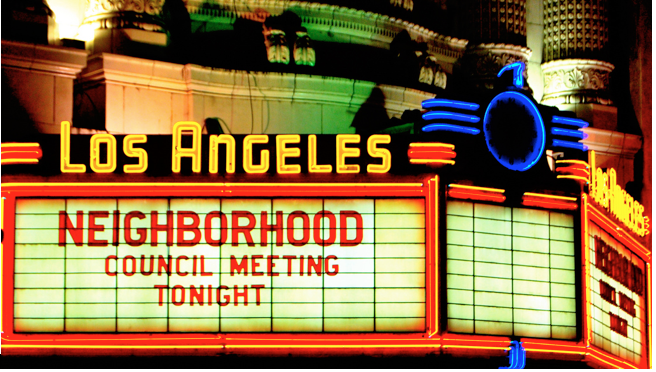Comments15 CANDLES, 96 POINTS OF LIGHT--(Editor’s Note: This month marks the 15th anniversary of the certification of Los Angeles’ first Neighborhood Council. CityWatch is celebrating with a multi-month celebration of introspective articles and view points on how LA’s Neighborhood Councils came about, how they’re doing and how their future looks. This perspective by Doug Epperhart is such an effort.)
The first of Los Angeles’ neighborhood councils -- Wilmington and Coastal San Pedro -- recently marked 15 years since they were certified by the Board of Neighborhood Commissioners. This is the third CityWatch column I’ve written commemorating that anniversary. I looked back to see what I said in 2006 and 2011 as a sort of measuring stick plotting the progress of our local experiment in grassroots democracy.
Ten years ago, I wrote, “Institutions, like children, need time to grow and mature. Whether the neighborhood councils are merely angels with dirty faces or little devils depends on your point of view.”
Five years ago, it was, “Love them or hate them, neighborhood councils are here to stay.”
It seems the councils turned out to be mostly well-behaved, if sometimes difficult, teenagers.
At the beginning, the city’s fledging neighborhood empowerment bureaucracy focused too much on its own internal issues -- especially on how to prepare for certifying and serving the anticipated hundred or so councils. Too little attention was given to assisting those working to organize the councils. For instance, a sample set of bylaws would have been a great help. Some training in dealing with the bureaucratic process would have gone a long way in reducing volunteers’ frustrations.
Back then, I recall telling more than one politician the councils didn’t need project coordinators to show up at meetings and read announcements; they needed clerks to fill out paperwork. Many councils still struggle with the intricacies of bureaucratic process.
This was exacerbated by the money showered on councils after they had been around for only a year. The original $50,000 stipend was too much, too soon. Many councils tried saving the money which led to a “use it or lose it” rule requiring groups to spend the funds or see them taken back at the end of the fiscal year. Clearly, NC volunteers didn’t understand the culture of government.
And, as any neighborhood council treasurer can tell you, the process by which funds are allocated to, and spent by, councils has been an ongoing nightmare. About the only difference now is you wake up a little sooner.
Perhaps the greatest challenge was, and still is, the issue of defining each councils’ stakeholders. The charter language of “live, work, own property” is fairly straightforward. But, what is a “community interest” stakeholder? Originally, it was up to each council to decide if it would include these stakeholders and, if it did, define the criteria for participation as board members and stakeholders. Five years in, the neighborhood council review commission recommended, and the city council agreed, to require that all councils include this “other” category.
Democratic governments derive their authority from the just consent of the governed. Usually, the “body politic” is defined as those who reside within the entity’s jurisdiction. Not so for neighborhood councils. Their universe of stakeholders is potentially infinite. At election time, this creates no end of complications for councils. More than anything else, stakeholder definition continues to be a problem for the neighborhood council system.
The greatest benefit of neighborhood councils is the development of a cadre of passionate and informed community activists. Over the last 15 years, thousands have served on neighborhood council boards and committees. They’ve learned about the idiosyncrasies of their city government and its minions. For many, the experience left them disillusioned. But, many more remain engaged, serving their neighbors and working to improve their communities. Some have now entered City Hall as appointed and elected officials.
Neighborhood councils were born in the midst of the secession movement as an experiment in grassroots democracy. Fifteen years later, those roots have taken hold and continue to thrive.
(Doug Epperhart is a publisher, a long-time neighborhood council activist and former Board of Neighborhood Commissioners commissioner. He is a contributor to CityWatch and can be reached at: [email protected]) Prepped for CityWatch by Linda Abrams.
Sidebar
Our mission is to promote and facilitate civic engagement and neighborhood empowerment, and to hold area government and its politicians accountable.

 CityWatch Los Angeles
Politics. Perspective. Participation.
CityWatch Los Angeles
Politics. Perspective. Participation.
14
Sun, Dec





